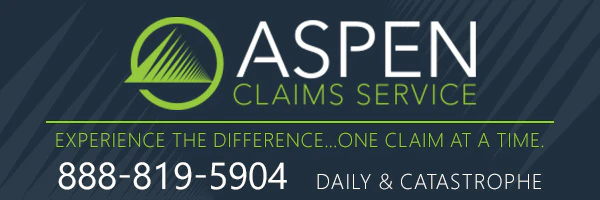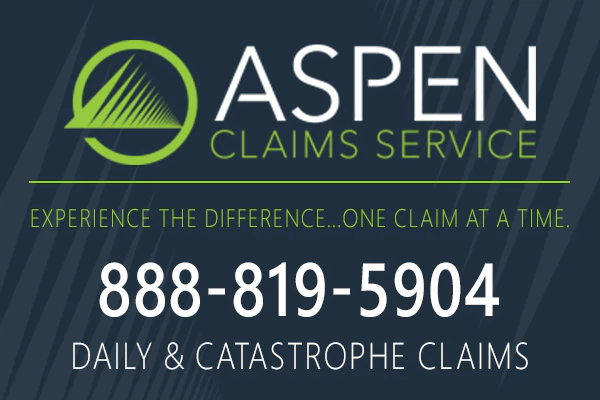
Ethics and Transparency in Relationship Building
Sunday, July 9th, 2023 Claims Pages Staff Mastering Relationship Building in the Insurance LandscapeIn the grand scheme of the insurance world, trust serves as the North Star guiding the way. Whether it's between insureds and claims professionals, or between claims professionals and carriers, trust is the binding force that connects and solidifies relationships. Establishing and nurturing this trust, however, isn't as simple as shaking hands or sharing a few friendly emails. It requires commitment, authenticity, and above all, a dedication to ethical practices.
Ethics in the insurance industry isn't a new concept. It has been an integral part of the profession since the early days of insurance, when the first underwriters gathered at Lloyd's Coffee House in London. Fast forward a few centuries, and the importance of ethical practices has only grown, permeating every aspect of the insurance world. In claims handling, ethical practices translate to behaviors that promote fairness, honesty, and transparency.
For instance, consider a scenario where you, as a claims professional, are tasked with investigating a complex property claim. You find that the damages claimed by the insured are significantly higher than your estimation. In such a situation, it's easy to find yourself at a crossroad. On one hand, you want to maintain a positive relationship with the insured. On the other hand, you have a responsibility towards the carrier and a duty to be fair and honest. So, what do you do? This is where ethics come into play.
Navigating the Ethical Crossroads
Navigating such ethical crossroads requires a solid understanding of what ethical behavior in claims handling entails. While each situation may be unique, there are some broad principles that can serve as guiding lights.
Firstly, honesty is paramount. Regardless of the pressures you face, conveying the true findings of your investigation to all involved parties is vital. It might be challenging, particularly if the insured is upset or dissatisfied with the outcome, but remember that honesty is the bedrock of trust.
Secondly, ensure fairness in your evaluation. Your role as a claims professional is not to favor one party over the other but to provide an objective assessment of the claim. This means treating all parties with respect, keeping personal biases at bay, and focusing solely on the facts at hand.
Thirdly, confidentiality is key. Insureds entrust you with sensitive information, and it's your responsibility to protect this information and use it only for its intended purpose. This respect for confidentiality not only fulfills legal requirements but also strengthens the trust between you and the insured.
Fourthly, demonstrate professionalism at all times. This means adhering to the industry's standards and practices, keeping up to date with the latest developments, and constantly seeking to improve your skills and knowledge. By doing so, you're showing your commitment to your profession and enhancing your credibility.
And finally, be transparent. Transparency in claims handling isn't about revealing all your trade secrets or sharing every minute detail of the process. It's about keeping the insured and the carrier informed about significant developments, explaining your decisions clearly, and answering queries honestly. Transparency fosters understanding, and understanding, in turn, fosters trust.
By adhering to these principles, you're not just fulfilling your professional responsibilities. You're building a foundation of trust and respect that can significantly strengthen your relationships with insureds and carriers.
The Unseen Bridge: Transparency in Claims Handling
Transparency is a critical component of ethical behavior in claims handling. It's often referred to as an 'unseen bridge' that connects claims professionals with insureds and carriers. This bridge, built on open communication and honesty, facilitates a smooth journey throughout the claims process.
But what exactly does transparency entail? It's about more than just telling the truth. It's about being clear, open, and accountable in your actions and communications. It's about helping insureds and carriers understand how you've arrived at your decisions, and it's about managing expectations realistically.
Take, for instance, the scenario mentioned earlier where the insured's estimation of damages is much higher than your own. A transparent approach here would be to explain your assessment process clearly to the insured, outlining the steps you've taken, the factors you've considered, and the reasons behind your evaluation. You might also need to manage expectations, clarifying that while you understand the insured's perspective, your assessment must be based on specific guidelines and standards.
This doesn't mean the insured will be pleased with the outcome. They might still be disappointed or frustrated. But your transparency can help them understand that you've been fair and thorough in your evaluation, which can go a long way in maintaining their trust and respect.
Building Blocks of Transparency: Clarity, Openness, and Accountability
Let's delve deeper into the building blocks of transparency: clarity, openness, and accountability.
Clarity in communication means conveying information in a manner that's easy to understand. It involves avoiding jargon, explaining concepts in layman's terms, and ensuring the insured or the carrier has fully grasped what you're saying. Clarity also involves being clear about the claims process, timelines, and what the insured or the carrier can expect at each stage.
Openness, on the other hand, is about sharing information proactively. It's about keeping the insured and the carrier updated on the progress of the claim, notifying them of any significant developments, and being open to their feedback or queries. Openness also means admitting when you're unsure about something and need time to gather more information or consult with others.
Finally, accountability involves owning your decisions and actions. It's about taking responsibility when things go wrong, rather than shifting the blame to others. Accountability also means being willing to revisit your decisions if new information comes to light, and being open to learning from your mistakes.
These building blocks of transparency, when put into practice, can significantly enhance your relationships with insureds and carriers. They can help establish a reputation of integrity and professionalism, which can, in turn, open doors to new opportunities and collaborations.
Yet, even with these building blocks, achieving transparency is often easier said than done. It requires continuous effort, a willingness to adapt, and an understanding of the cultural and technological nuances that influence communication in the modern insurance world.
Navigating the Nuances: Cultural and Technological Influences on Transparency
In today's globalized world, insurance professionals often interact with insureds and carriers from diverse cultural backgrounds. These cultural differences can significantly impact communication styles, norms, and values. As such, understanding these differences is crucial in achieving transparency.
For example, in some cultures, direct communication is valued, and feedback is given straightforwardly. In contrast, other cultures might prefer a more indirect style of communication, with feedback provided subtly and diplomatically. As a claims professional, it's essential to adapt your communication style to these cultural norms to convey transparency effectively.
Similarly, norms around openness and sharing of information can also vary across cultures. While some cultures might value full disclosure and openness, others might prefer to keep certain information confidential. Navigating these differences requires a nuanced understanding of cross-cultural communication and a flexible approach that respects and accommodates these cultural norms.
In addition to cultural influences, technological advancements have also reshaped communication in the insurance industry. Digital tools like email, instant messaging, video conferencing, and social media have made communication faster and more convenient. However, they also pose new challenges in terms of maintaining transparency.
For instance, digital communication can sometimes lead to information overload, where the insured or the carrier is overwhelmed by the volume of information they receive. This can create confusion and misunderstandings, hindering transparency. To prevent this, it's essential to manage digital communication effectively. This could involve setting clear communication norms (like responding to emails within a certain timeframe), using concise and clear language, and ensuring that the most critical information is communicated first.
Technology also offers new avenues for enhancing transparency. For example, some insurance companies now use online portals where insureds can track the progress of their claim in real-time. This not only keeps the insured updated but also demonstrates transparency in how the claim is being processed. Additionally, digital tools can also be used to share resources and information that can help the insured or the carrier understand the claims process better.
Thus, while cultural and technological nuances pose challenges to maintaining transparency, they also offer opportunities to enhance transparency. The key lies in understanding these nuances and leveraging them effectively.
The Art of Integration: Practical Strategies for Upholding Ethics and Transparency
Bringing ethics and transparency to the forefront of your work might feel like a daunting task, but with a few practical strategies, you can seamlessly integrate these values into your daily routine.
- Regular Communication:
Regular communication forms the bedrock of transparency. Keeping all parties updated on claim statuses, changes, and progress not only demonstrates professional courtesy but also aids in building trust. However, don't let your communication be one-sided. Encourage insureds and carriers to voice their concerns and questions. Make it a priority to respond to these promptly and comprehensively, fostering an environment of open dialogue.
- Continuing Education and Training:
Keeping your knowledge base current is crucial. Regular training on ethical considerations and transparent practices can ensure that you are at the forefront of industry standards and expectations. This also signals to both insureds and carriers that you are a dedicated professional committed to maintaining the highest standards of conduct.
- Develop an Ethical Decision-Making Framework:
Having a systematic approach to making decisions can be a lifesaver in complex situations where the 'right' choice isn't immediately clear. This framework can be as simple as a set of guiding questions that prompt you to consider the implications of a particular decision. For example, 'Who does this decision benefit?' and 'Does this decision align with my core values and those of my organization?'
- Use Technology to Your Advantage:
As discussed earlier, technology can be a powerful tool for enhancing transparency. Use it to regularly update claim statuses, provide explanations for decisions, and share resources.
- Be Honest About Mistakes:
Honesty is the best policy, especially when it comes to mistakes. If an error occurs, own up to it promptly. Apologize, rectify the mistake where possible, and communicate the steps you'll take to prevent such mistakes in the future. This will demonstrate your commitment to transparency and reinforce trust.
- Foster a Culture of Ethics and Transparency:
Finally, make ethics and transparency a part of your organization's culture. Encourage open dialogue, provide training, and reward ethical behavior. An organization-wide commitment to these values can go a long way in ensuring their integration into everyday practices.
At the end of the day, remember that your role as a claims professional is rooted in service to others. By upholding ethics and transparency, you not only fulfill this role effectively but also build strong, enduring relationships with insureds and carriers alike. As you move forward in your career, let these values guide your way, serving as the compass that navigates you through the intricacies of the insurance industry.
Bridging the gap between professional duties and personal values might seem like walking a tightrope, but with the ethical compass and transparency lens, the balancing act becomes much more manageable. In the long run, these practices don't just build better relationships, but they also shape the claims professional into an esteemed pillar of the insurance community. The power of ethics and transparency in relationship building, as such, is truly transformative, unlocking new potentials and paving the way for an empathetic and trust-based insurance industry.
Augment your mastery in the art of relationship building by delving into the other articles within our editorial series. Each piece illuminates a specific aspect, offering valuable insights and actionable tips to strengthen your relationship-building skills. From harnessing emotional intelligence to understanding cultural gaps, from leveraging technology and digital communication to the importance of ethics and transparency, our series addresses the crucial components of forging strong relationships in the insurance industry.

